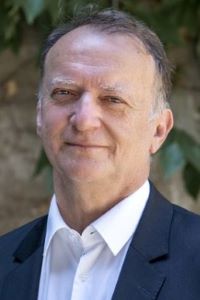The “European Summit” aims to establish a new form of European institutional architecture that would represent the widest circle in the series of institutional circles whose integral core is the European Union.

Dusko Lopandić
The “Europe” summit of 44 European countries’ heads of state or government held in Prague did not announce or bring about a dramatic turn of the already- too-turbulent events that have been shaking Europe since February 24, 2022. It could be said that it is a sort of joint reaction, although still insufficiently defined, to the collapse of order in “wider Europe” caused by Russia’s aggression against its neighbour. Initiating a conflict that has not been seen since the end of World War II and which, unfortunately, has the potential to escalate further, Russia practically voluntarily excluded itself from the current European institutional order, as symbolically confirmed by its exit/exclusion from the Council of Europe, as well as absence from the meeting in Prague.
A one-day discussion between leaders of 44 European countries dedicated to issues of security, energy and migration, without a firm agenda, without the establishment of an institutional structure and without conclusions (except for an agreement to continue with similar meetings) showed, firstly, a desire that the current politically, economically and security dangerous situation, be jointly overcome – regardless of the possibly different views of the participants on certain specific issues, or the existence of known bilateral disputes.
The summit in Prague is somewhat reminiscent of the various forms of similar regional summit meetings (minus the joint declaration) that the European Union regularly organizes – from summits with countries in Africa to South America. On the other hand, the “European Summit” aims to establish a new form of European institutional architecture that would represent the widest circle in the series of institutional circles whose integral core is the European Union. The summit announces new forms of pan-European cooperation. At the same time, the other side of this coin implies an expectation that there will be a revitalization of the European Union enlargement policy in the context of new divisions in Europe and the acceptance of the candidacies of Ukraine and Moldova (along with Georgia) to join the EU.
It is very important that a large number of participants from the EU, including German Chancellor Scholz, confirmed that the launch of the EPS in no way represents an alternative to the EU enlargement policy, which has its own dynamics. The crisis and the war in Eastern Europe have shown, among other things, the extent to which the EU is essentially late with its expansion to the Western Balkans. The expansion to the countries of the Western Balkans – which has been going on for two decades, and there is no end in sight – would represent a real investment in European security and future. In that sense, instead of proposals on delaying the next round of enlargement until after 2030, it would be much more expedient to elaborate and implement innovative proposals on the acceleration of EU enlargement as soon as possible, given the circumstances of new geopolitical challenges. This would imply the gradual or phased accession of the countries of the WB to the EU, as it was announced in principle in the conclusions of the European Council – in parallel with full inclusion of candidate countries with the European Union in the sectoral policies of the Union as well as access to structural funds of the Union.
At a time when peace in Europe is seriously threatened more than ever in recent history, integration of the Western Balkan countries into the Union would confirm the vitality and efficiency of the European integration project, ensuring political stability and increased economic prosperity in the region, which is of strategic importance to the whole of Europe. .
Prof. Dr. Duško Lopandić, Vice President of the European Movement in Serbia



Leave A Comment